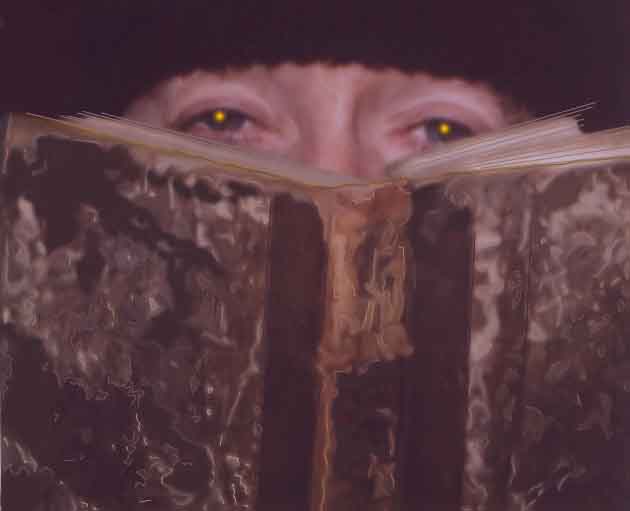









EVA STUBBS' MULTIPLES
University of Winnipeg Gallery IC03, November 1995.
[First published in Border Crossings magazine as "Feat of Clay," in their Winter, 1996 issue, 55-56.]
This exhibition consisted of many casts of two clay forms. Stubbs pressed clay into plaster molds taken from clay originals, and then had the casts fired. No two finished pieces are exactly alike. Fresh casts made by using an old paddle to press the clay into the plaster mold were made into unique pieces before firing with a few tools, including a length of piano wire; small sticks for inscribing abstract lines onto surfaces (sometimes she presses a rope and plastic foam into the clay, too); and a small palm-sized stone with which she burnished unfired surfaces. Just before having the work fired at Sounding Stone in Winnipeg, she rubbed oxides and stains into the clay.
The results of these processes--phalluses and vessel sculptures--had me scrambling for comparisons with ancient and modernist art, since nobody in Winnipeg (as far as I know), and only a few contemporary sculptors such as the American sculptor Louise Bourgeois and the Canadian John Greer are doing anything similar.
In the modernist era, Gauguin made small phallic wooden totems in Tahiti with inscribed figures on them, and later Brancusi carved the phallus-like forms, for example in the sensational Princess X. It is as if Stubbs were reconciling the artistic primitivism of her modernist elders and the post-modernist tropes of her contemporaries in her latest work. This stranding has implications for a feminist-influenced reading of the work, and for Stubbs' seeming aesthetic isolation in Winnipeg.
The forms in this exhibition are male and female, one phallic and the other womb-like. (Stubbs herself tends to read them this binary way.) Satirists are fond of pointing out that the word "phallus" -- an unavoidable psychoanalytical word in the context of Stubbs' recent work--is always imagined as an erect and never flaccid penis. What will satirists make of phallic sculpture which is, in fact, hard fired soft clay? That these sculptures are stacks of either two, three or four pieces is more grist for literal-minded readings (both naive viewers and psychoanalytic critics tend to read art literally). Is the literal-minded male viewer likely to read a form as a sliced penis rather than stacked phallus, for example?
Other readings of the work, which do not, of course, cancel out simpler readings, might position Stubbs' use of archaic forms within a larger feminist project of artistic recovery and cultural reevaluation. Feminist reevaluations of sexuality and fertility in art are part of a wider feminist shift in contemporary culture; this fundamental questioning is analogous to the fundamental rethinking of art that modernist artists undertook by reference to primitive sources (one thinks of Picasso). In modernist art, the "primitiveness" of African and Oceanic art and the "primitive"--as in fundamental, general--qualities of art were explored simultaneously (see, for example, the 1984 Museum of Modern Art's "Primitivism" in Modern Art exhibition catalogue). Several contemporary women artists about Stubbs age, such as Louise Bourgeois and Carolee Schneeman, look to so-called primitive forms to begin their feminist analyses. What intervenes between the primitive aspirations of Modernism and today's feminist art is a point of view and a feminist cultural orientation, but what they share is a propensity to associate their respective new points of view with old primitive art.
 |
|